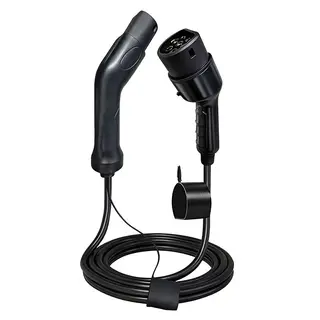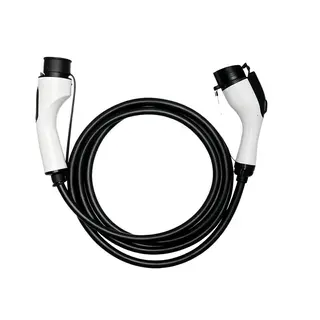In today's rapidly developing era of electric vehicles, EV chargers, as the "fuel stations" for electric vehicles, play an indispensable role. The quality and performance of EV chargers are directly related to the user experience of electric vehicle owners and the healthy development of the entire industry. Therefore, rigorous testing of EV chargers is particularly critical. This article will provide a detailed introduction to the importance and specific steps of EV charger testing, helping readers better understand this process.
The safety, reliability, and charging efficiency of EV chargers have always been the focus of users' attention. In order to ensure that EV chargers can provide safe and efficient charging services for electric vehicles, testing becomes especially important. So, what is the significance of EV charger testing?
The normal operation of an EV charger is its most basic requirement. Through testing, it is possible to check whether each component of the EV charger, such as sockets, power cables, and controllers, is working properly. Any problem in these components may cause the EV charger to fail to charge the vehicle normally. For example, if the power cable has poor contact, it may cause charging interruption or even damage to the vehicle battery. Through testing, these problems can be discovered and resolved before the EV charger is put into use, thus ensuring stable charging service for electric vehicles.
EV chargers are devices that are directly connected to electrical energy, so safety is of utmost importance. Testing can comprehensively check the insulation performance, leakage protection device, overload protection device, and other safety functions of the EV charger. These safety features are crucial for protecting users and vehicles from hazards such as electric shock and electrical fires. For instance, a leakage protection device can immediately cut off the power when a leakage is detected, preventing current from passing through the human body or vehicle and causing harm. If an EV charger has not undergone strict safety testing, the consequences of leakage or overload could be catastrophic. Therefore, safety testing is an indispensable part of EV charger testing.
An efficient charging process is vital for electric vehicle users. Testing helps optimize the charging efficiency of EV chargers, ensuring that they can charge electric vehicles quickly and steadily. For example, testing can reveal whether there are issues such as unstable power output or slow charging speed during the charging process. If such issues are found, the design and parameters of the EV charger can be adjusted in time to improve charging efficiency, reduce user waiting time, and enhance the overall user experience.
User trust and satisfaction with EV chargers directly affect their willingness to use them. If EV chargers have undergone strict testing and are proven to be safe and reliable, users will have greater confidence in the quality and performance of the EV chargers and will be more willing to use them. Conversely, if EV chargers have not been tested or have failed testing, users may worry about their safety and reliability and thus avoid using them. Therefore, improving user trust and satisfaction through testing is of great significance for the promotion and use of EV chargers.
EV chargers may encounter various potential problems and malfunctions during use. Through testing, these problems, such as poor power cable contact, damaged sockets, or controller faults, can be detected early and corrected in time. This not only reduces the failure rate of EV chargers and improves their reliability and stability but also prevents user complaints and financial losses caused by failures. For example, if an EV charger fails to work properly due to a controller malfunction, it will not only affect user experience but may also damage the reputation of the charger operator. Therefore, identifying and solving problems in time is the key to ensuring long-term stable operation of EV chargers.
After understanding the importance of EV charger testing, let us look at the main steps involved. Only by following scientific and reasonable procedures can testing be carried out smoothly and produce reliable results. So, what are the key steps required in EV charger testing?
Developing a detailed test plan is the first step in EV charger testing and a key factor to ensure smooth testing and accurate results. The test plan should include testing objectives, test content, testing methods, and testing steps. The testing objectives define the goals to be achieved, such as ensuring the safety and improving the efficiency of the EV charger. The testing content covers various aspects of the EV charger, including hardware, software, and communication. Testing methods determine how the tests will be conducted, such as which testing equipment and techniques will be used. The testing steps detail the specific arrangement of the testing process to ensure orderly progress. A detailed test plan helps testers better understand the tasks, improve testing efficiency, and ensure accuracy and reliability of results.
According to the testing plan, preparing the necessary testing equipment is key to ensuring accurate results. Common testing devices include DC EV charger field testers, AC EV charger field testers, and programmable AC/DC loads. These instruments simulate the charging process of electric vehicles to test the various performance indicators of the EV charger. For example, programmable AC/DC loads can simulate different types of EV batteries to test the charger's performance under various load conditions. It is essential to ensure the accuracy and reliability of the testing devices themselves, as faults in the equipment may lead to inaccurate results, affecting performance evaluation. Therefore, regular calibration and maintenance of testing instruments are necessary.
Building a testing environment that meets the requirements is the foundation for accurate results. The environment should include charging facilities, communication equipment, and power supply devices. Charging facilities are the primary objects of testing and must be correctly installed and functional. Communication devices are used to simulate the communication process between the EV charger and the electric vehicle, ensuring stability and reliability. Power supply devices provide stable power to the EV charger, guaranteeing consistent power during testing. Additionally, attention should be paid to environmental stability, such as preventing electromagnetic interference and ensuring proper grounding, as these factors can affect testing accuracy. A stable, reliable environment provides ideal conditions for accurate results.
Tests should be conducted according to the plan and procedures, with detailed recording of all data and results. During testing, operators must follow proper procedures to avoid errors or abnormalities. Testers should strictly adhere to each step, verifying every detail, such as whether connections are correct and parameters are properly set. Data should include test time, conditions, and results, which can later assist in analysis and improvement. If any issues arise during testing, they should be recorded and analyzed promptly to determine solutions.
After clarifying the main steps, we can further explore the specific contents of EV charger testing. Understanding these aspects helps to comprehensively grasp the entire testing process and ensure its completeness and effectiveness.
Hardware testing focuses on examining each hardware component of the EV charger to ensure proper operation. This includes checking sockets, power cables, and controllers. For example, testing involves verifying good contact in sockets, inspecting cables for damage or aging, and ensuring controllers function properly during charging. Hardware tests can be performed through visual inspection or with instruments to detect any component damage or failure.
Safety performance testing is the most critical part of the process. It examines insulation performance, leakage protection devices, and overload protection devices. Insulation tests check for leakage during high-voltage charging, ensuring user and vehicle safety. Leakage and overload protection tests confirm that the system can quickly cut off power during faults to prevent accidents. Specialized instruments such as insulation resistance testers and leakage protection testers are commonly used. Strict safety performance testing ensures that EV chargers pose no risk to users or vehicles.
Charging efficiency testing evaluates the charging speed and power output stability of EV chargers. These tests determine whether efficiency meets specified standards and user expectations. For example, tests measure the charger's speed and stability under varying loads to ensure vehicles can be charged quickly. Programmable AC/DC loads simulate different EV batteries to assess performance. Such testing helps optimize design and parameters, improving efficiency and user satisfaction.
Communication testing checks whether communication between the EV charger and the electric vehicle is functioning correctly. Stable and reliable communication is essential for smooth charging operations. Tests include transmission rate, signal amplitude, bus delay, bus utilization, error rate, terminal resistance variation, message stress, and anti-interference capability. These comprehensive tests evaluate overall communication performance and reliability. For example, transmission rate testing ensures adequate data speed, while anti-interference tests confirm proper communication in strong electromagnetic environments. Identifying signal quality or error issues allows prompt corrective measures to ensure smooth charging.
Compatibility testing evaluates how well EV chargers work with different EV brands and models. Given the diversity of vehicles on the market, compatibility is essential to meet various user needs. These tests include interface compatibility and communication protocol consistency. Interface tests verify physical connection compatibility, while protocol tests ensure seamless data communication. If incompatibility is found, appropriate adjustments and improvements can be made to enhance compatibility and user satisfaction.
Electric vehicle charger testing is a key step in ensuring proper operation, user safety, high charging efficiency, and a better user experience. By developing a detailed testing plan, preparing testing equipment, setting up a proper environment, and executing tests, it is possible to comprehensively assess the performance of EV chargers and identify potential issues. EV charger testing includes hardware testing, safety performance testing, charging efficiency testing, communication performance testing, and compatibility testing, as well as the use of various test platforms such as charger factory acceptance test platforms and communication protocol consistency and vehicle interoperability testing platforms. Through rigorous testing, the quality and performance of EV chargers can be improved, promoting the development and popularization of electric vehicles, and providing users with safer, more efficient, and more reliable charging services.



